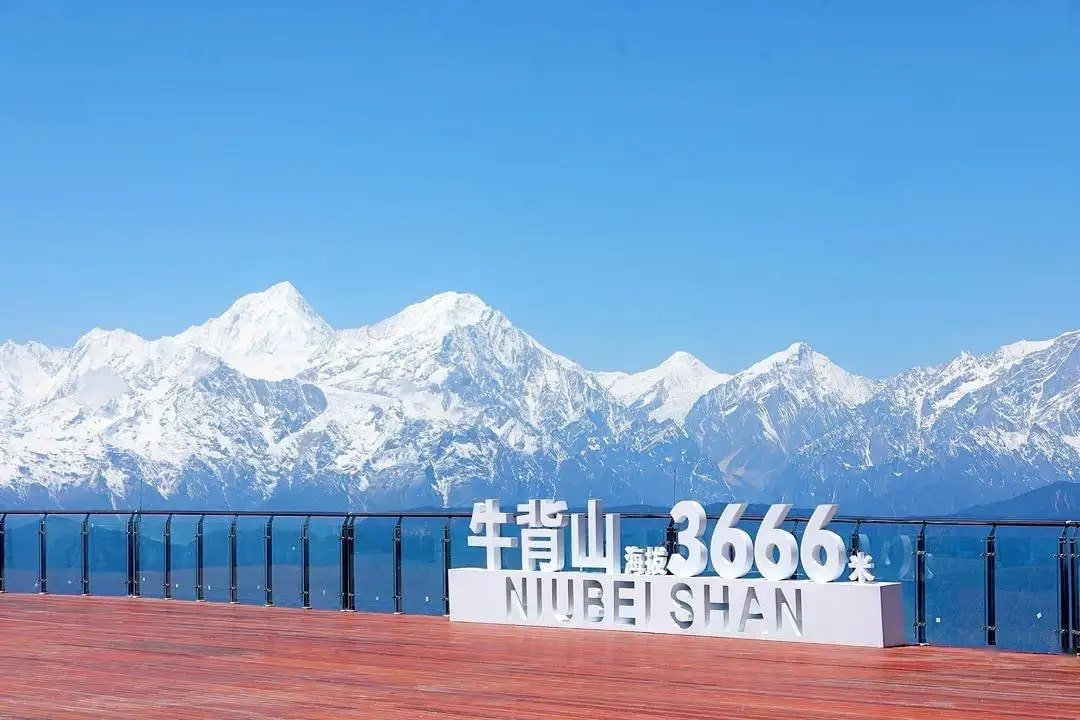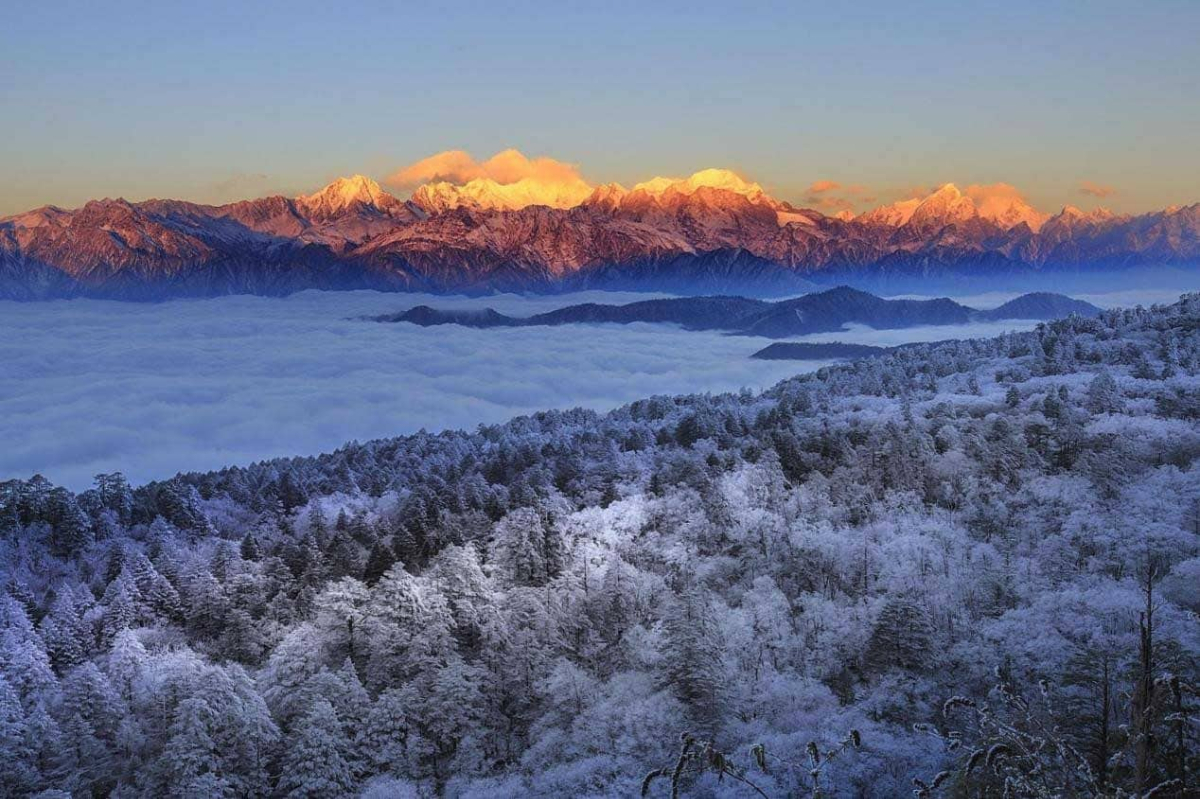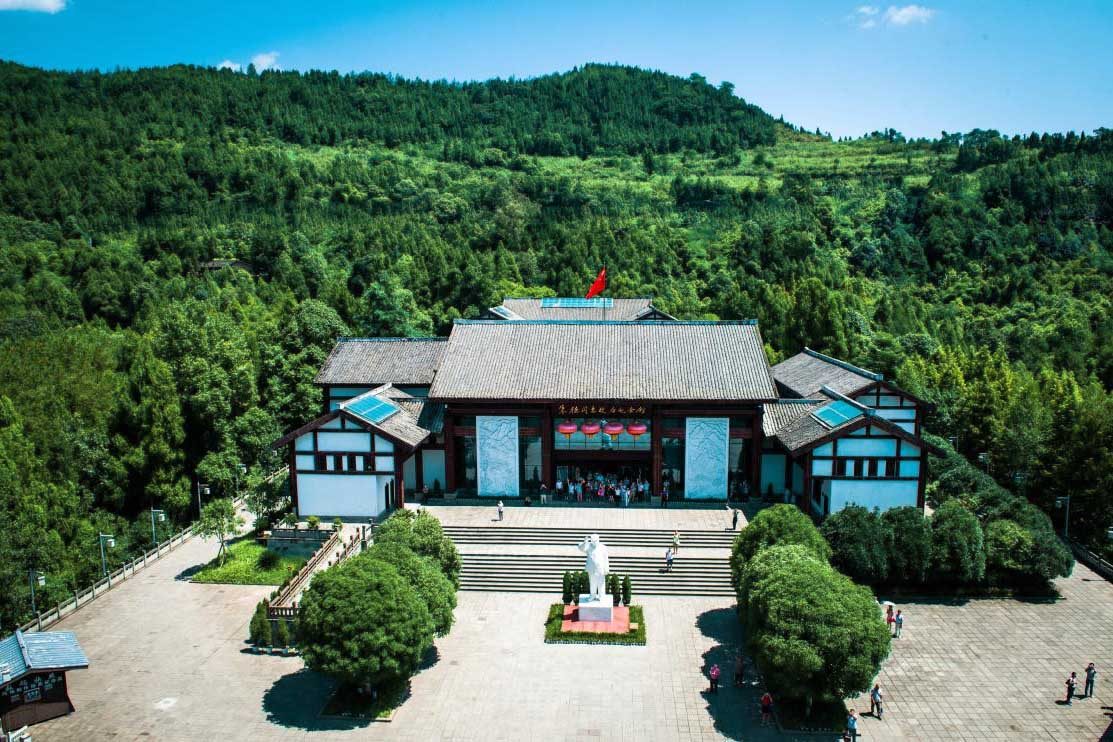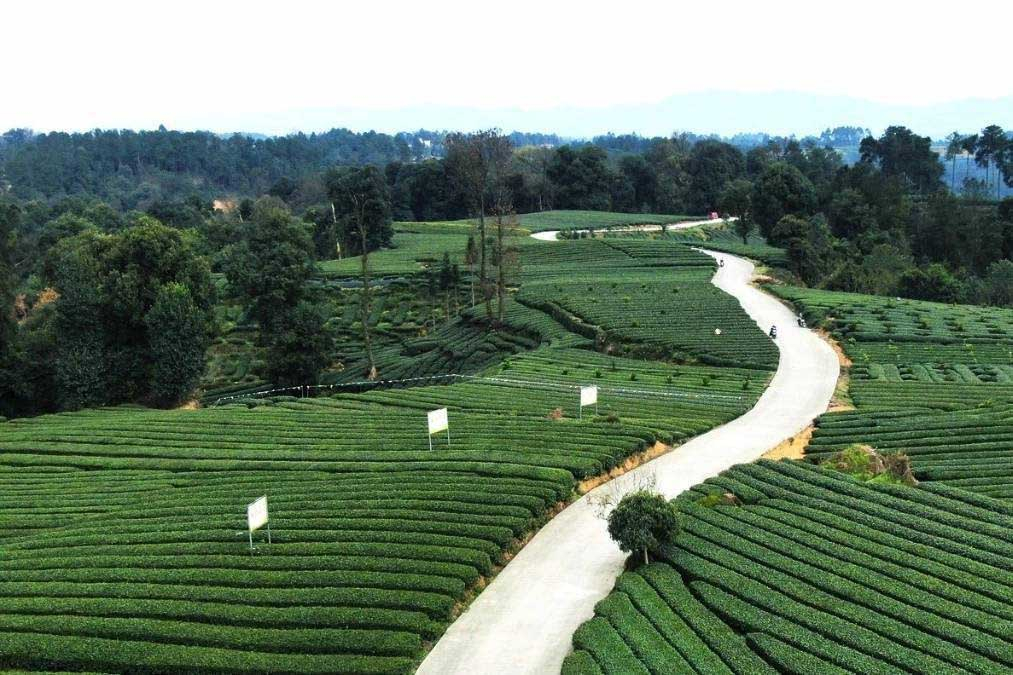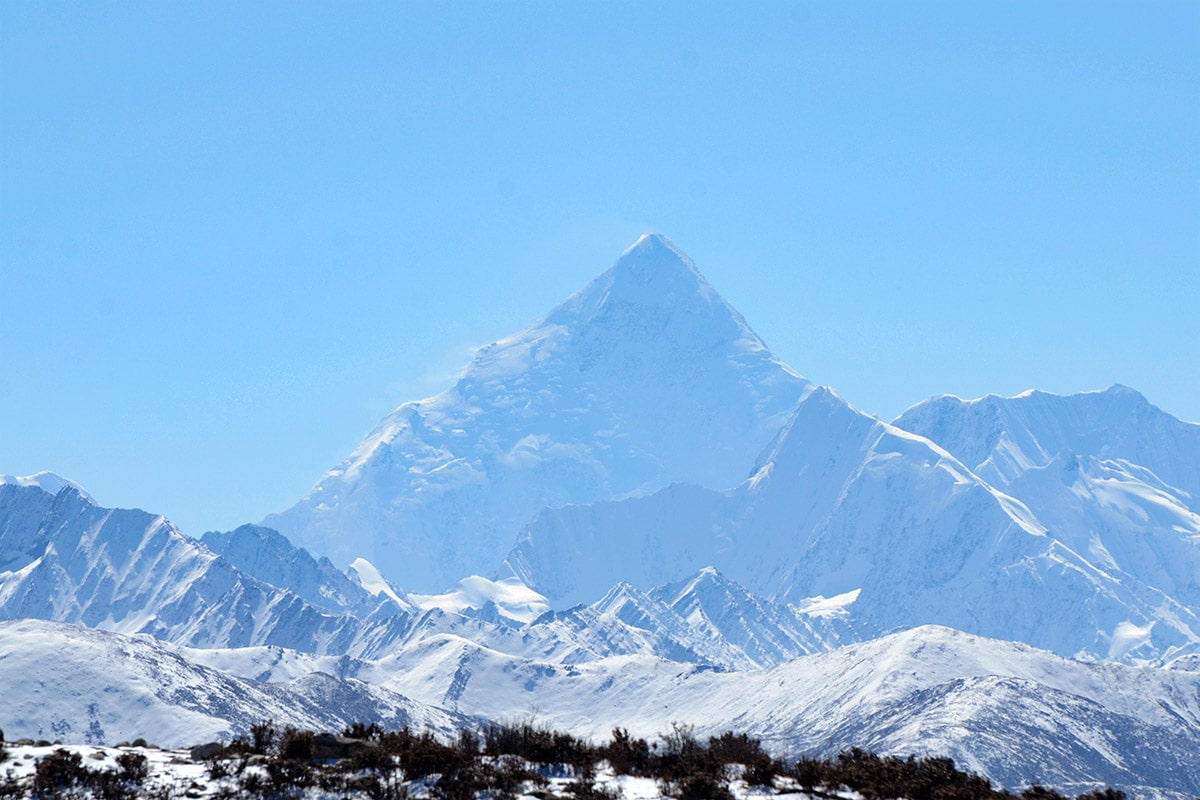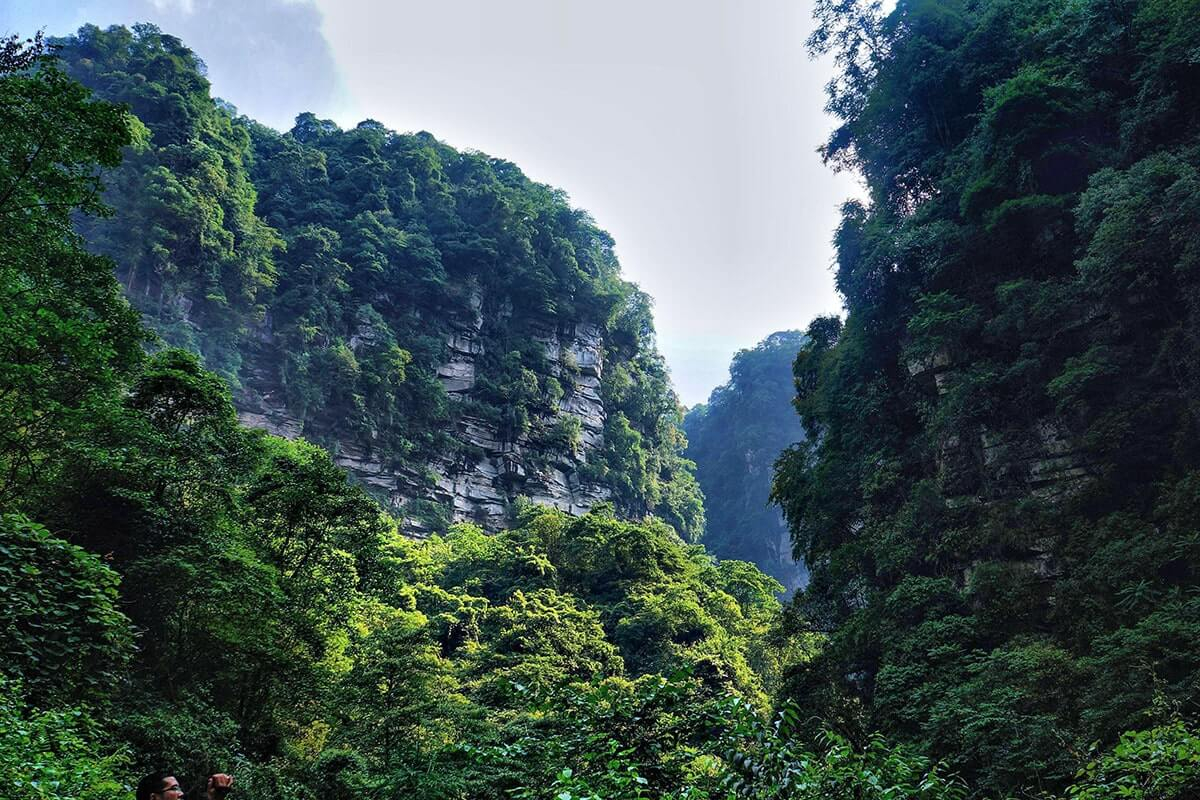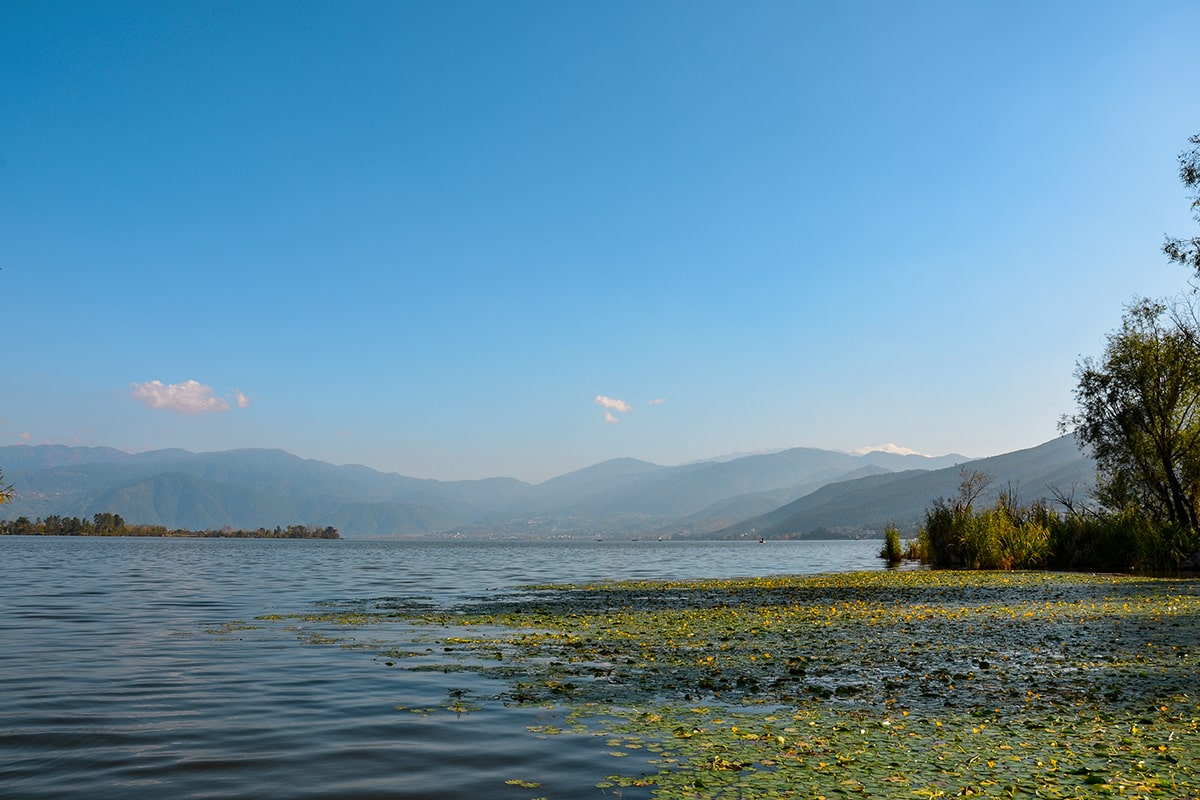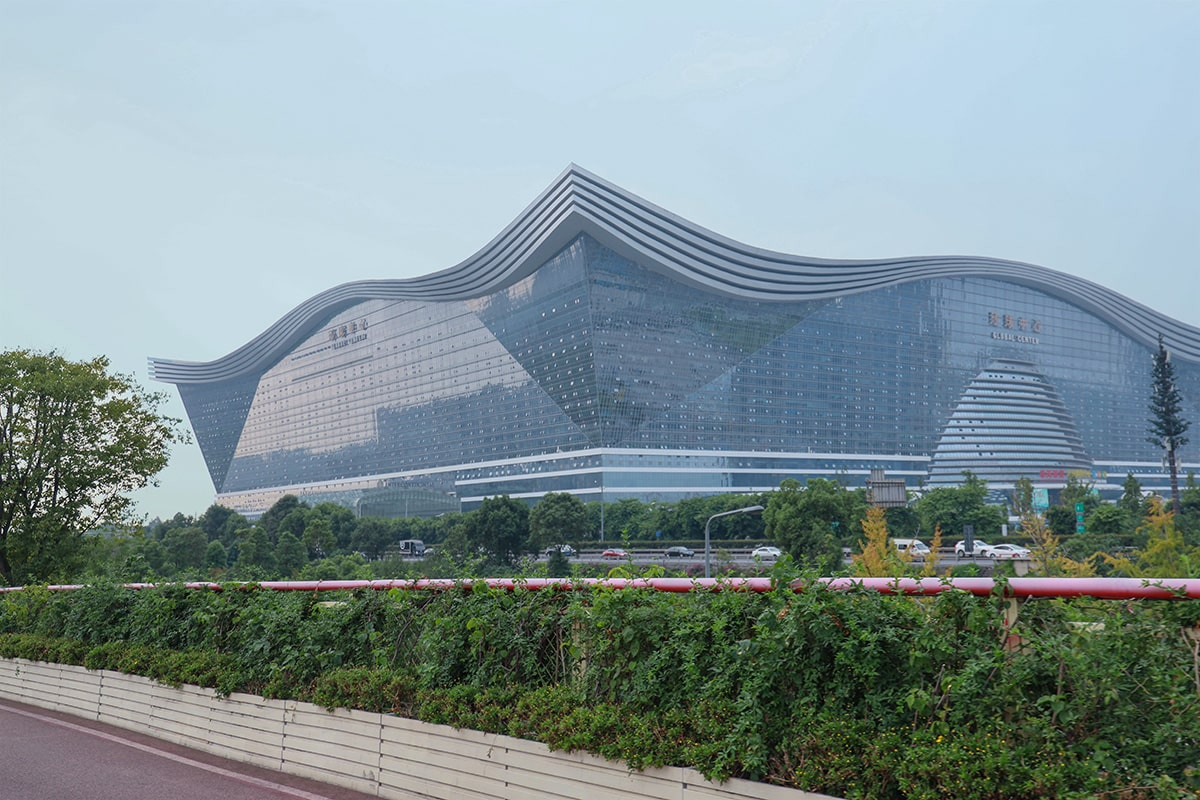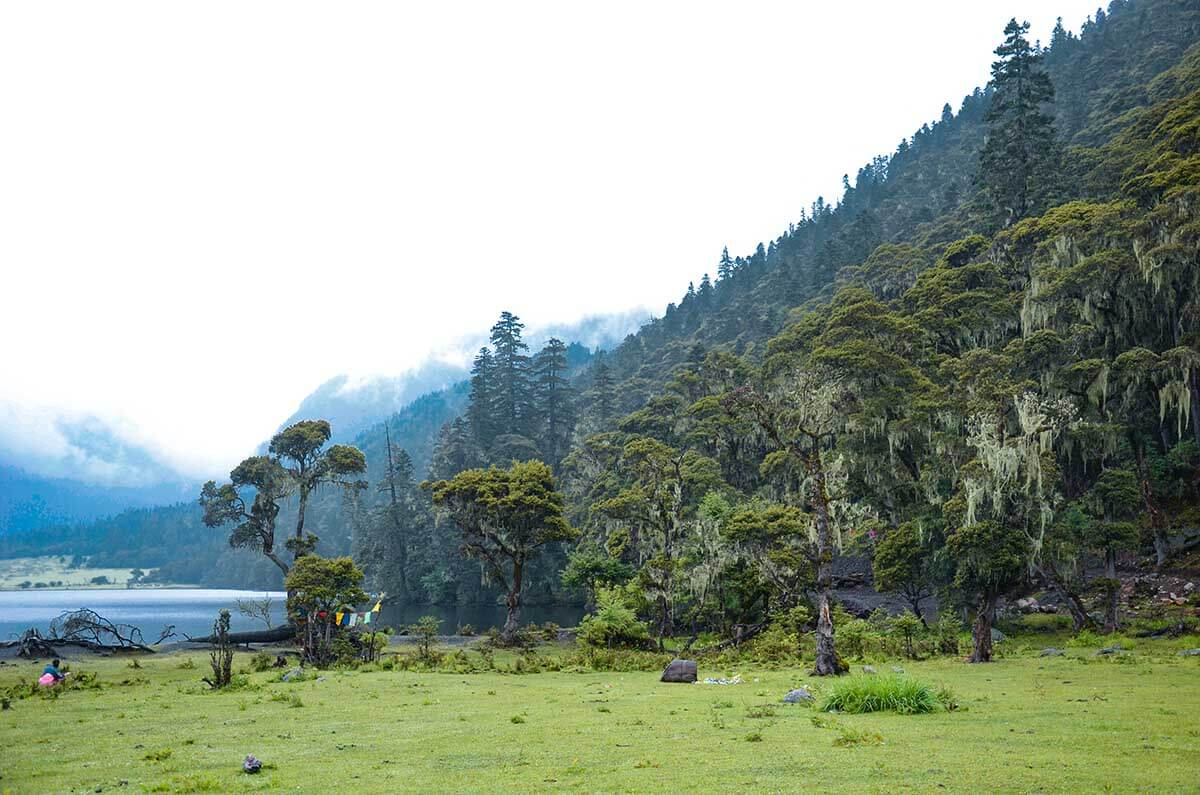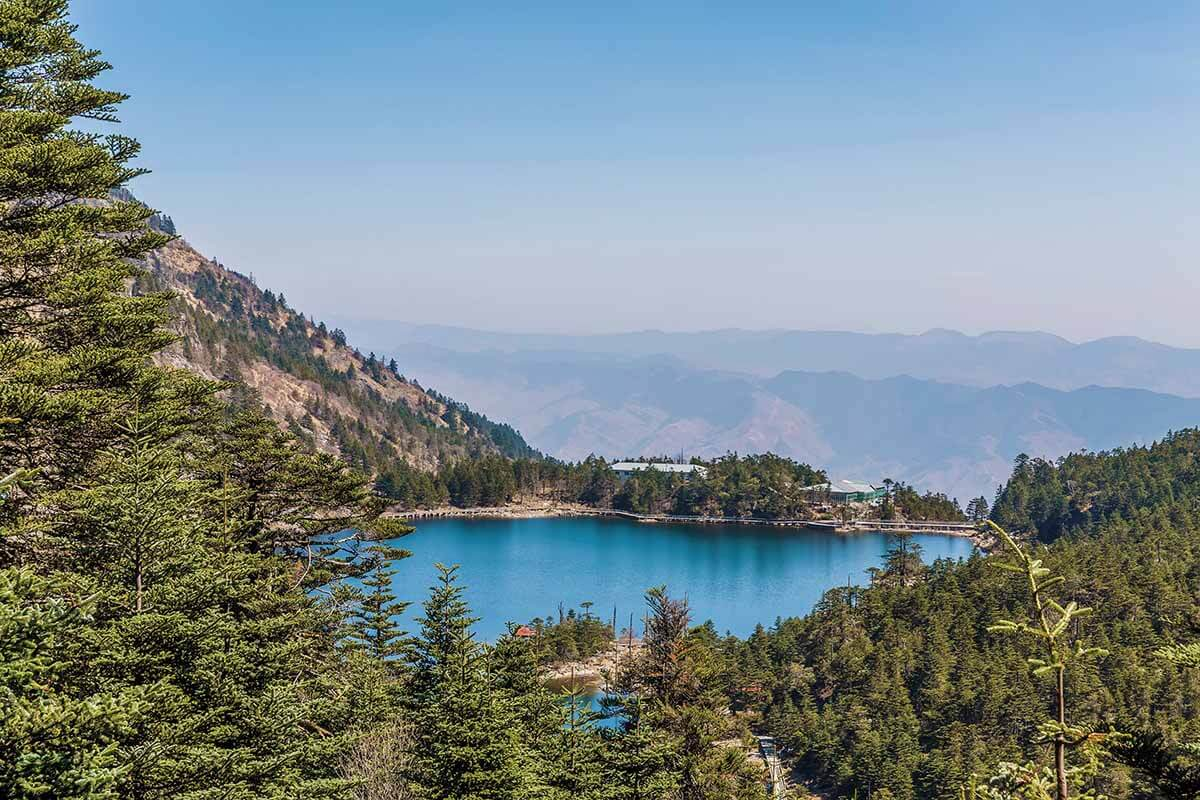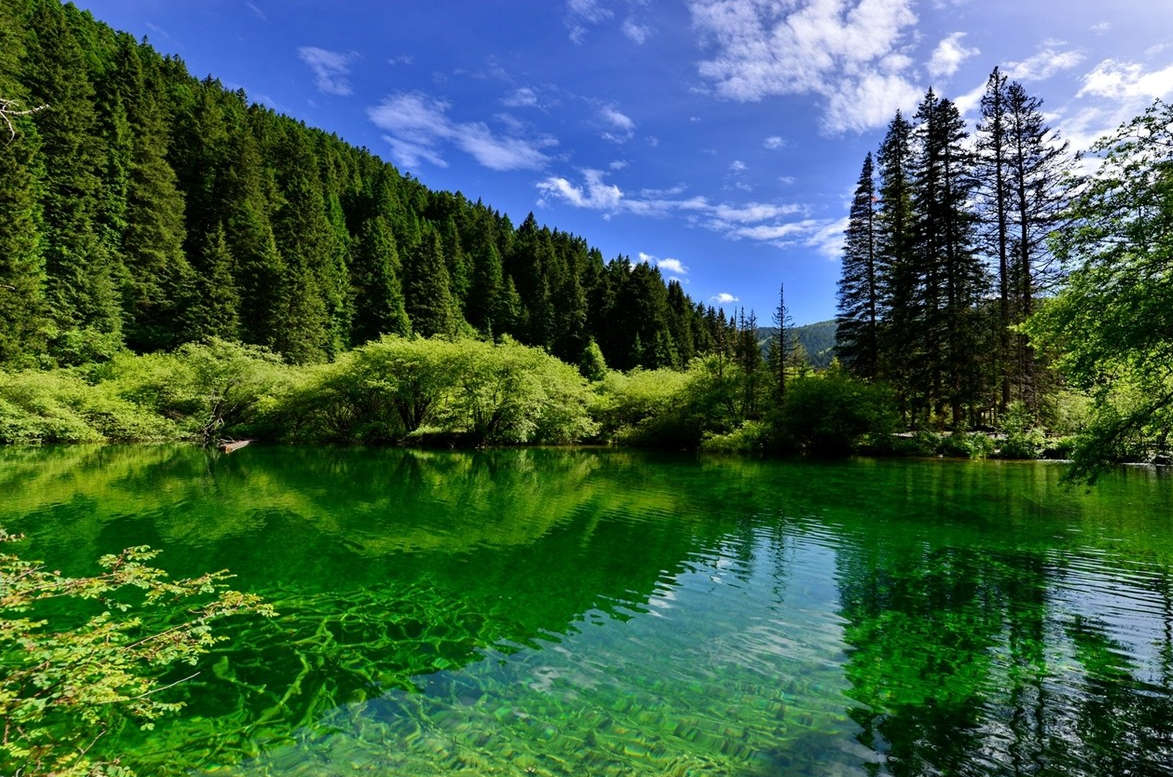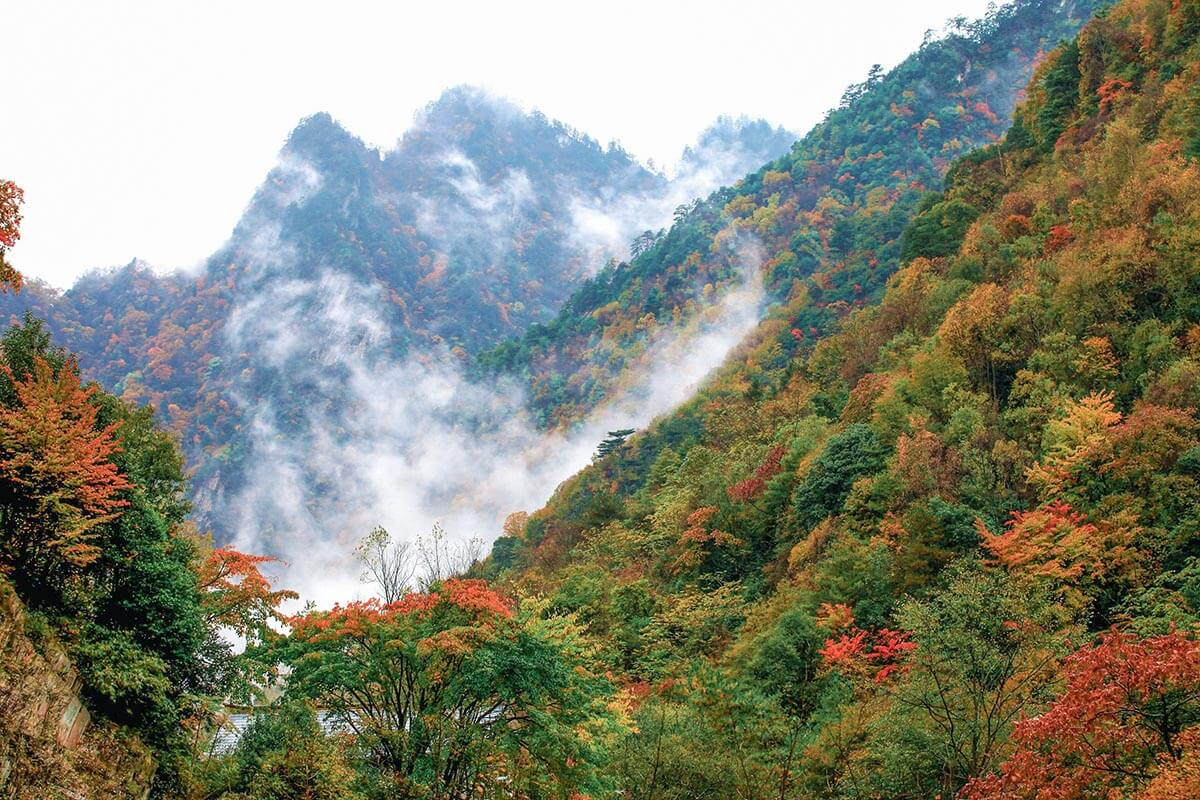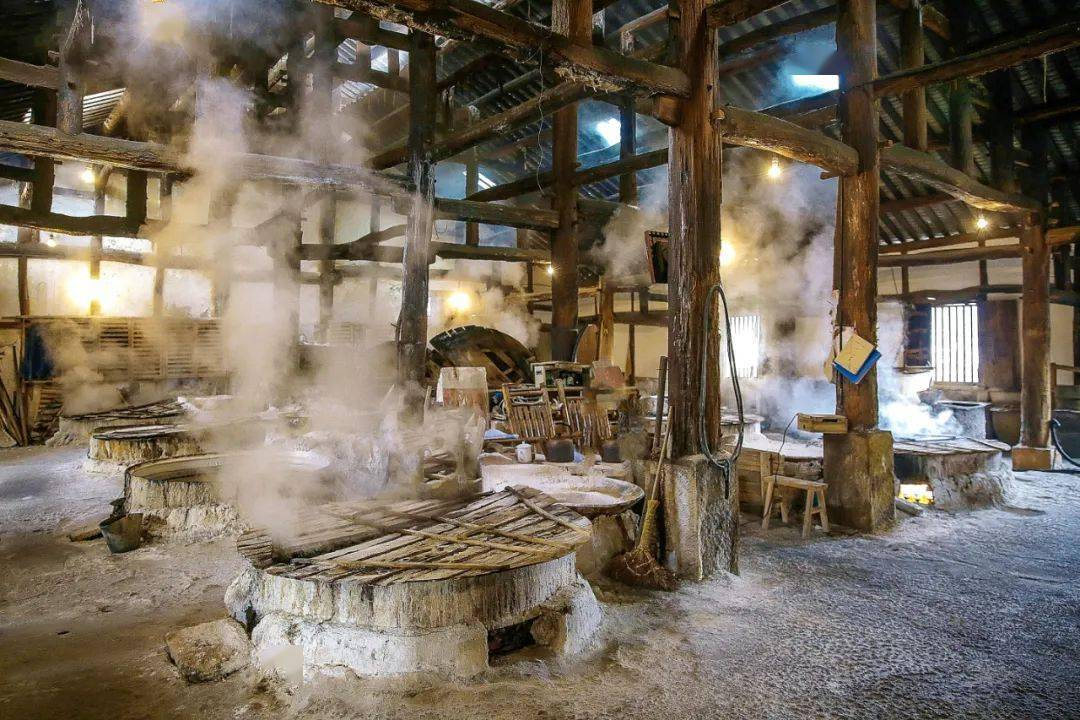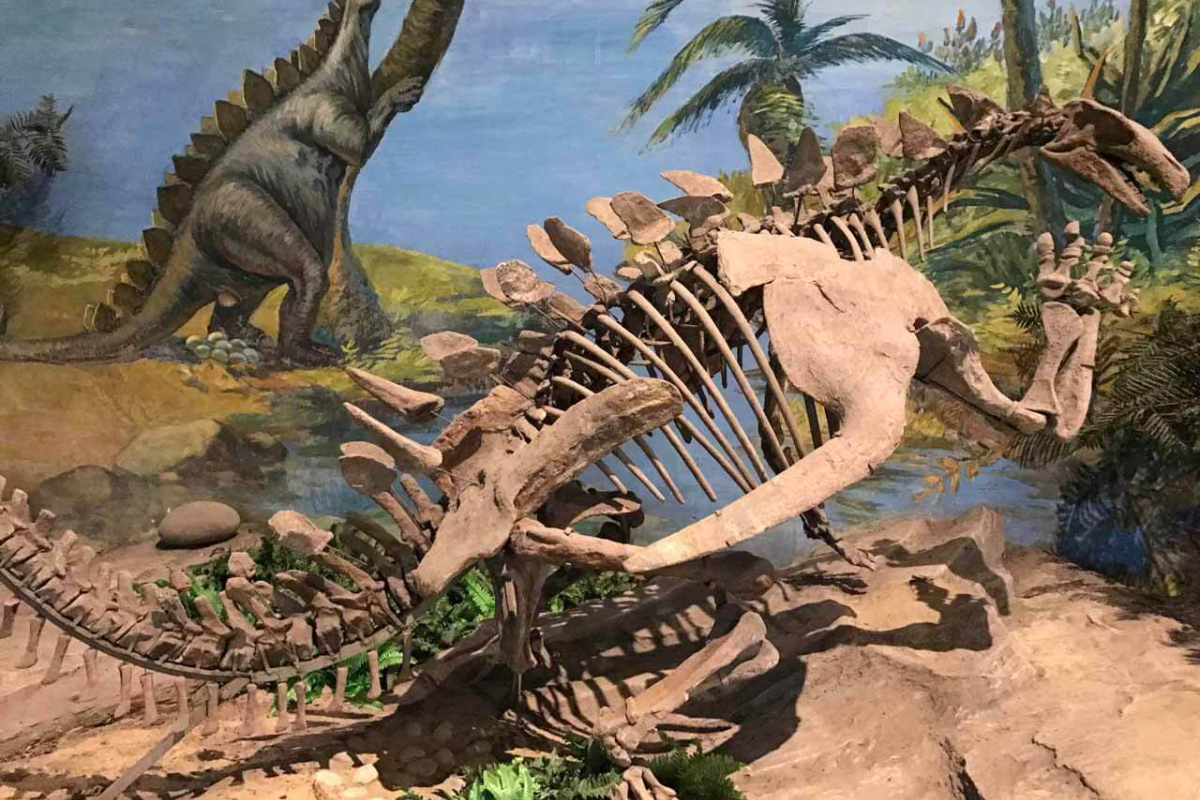Mount Emei
Chinese name: 峨眉山 ( E Mei Shan)
Location: Mingshan Road South, Emeishan city, Sichuan Province.
Ticket: Entrance ticket CNY160.00, sightseeing bus to Leidongping CNY90.00, round-trip cable car to Golden summit CNY120.00, round-trip cable car to Wannian Temple CNY110.00, Entrance ticket of Wannian Temple CNY10.00.
Estimated tour time: 1-3 days
Recommended time for visit: Autumnal Shades of red and gold in October; Azalea blossom during May-Jun; Snow view and Skiing during Dec-Feb.
Nearby attractions: Leshan Giant Buddha, Qiliping International Holiday Resort, Dafo Temple, Oriental Buddha Capital, etc.
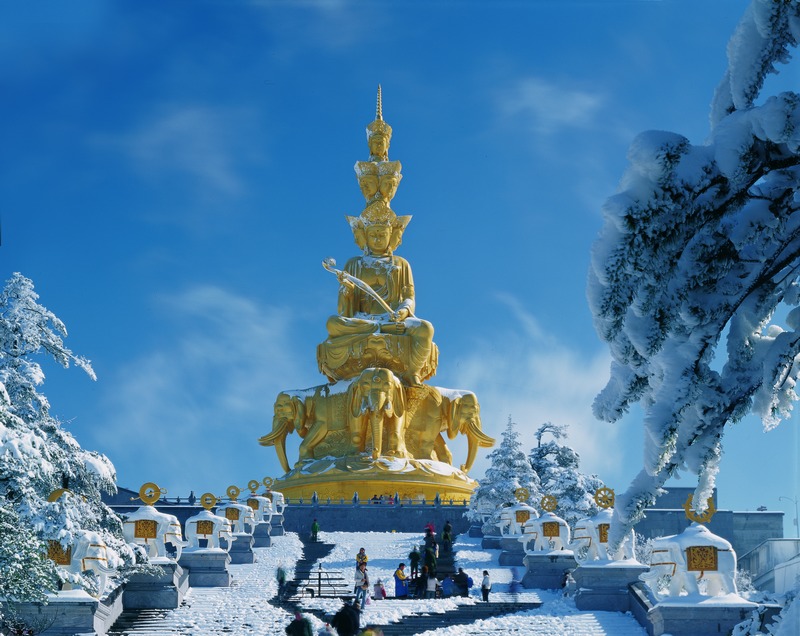
Emei Mountain is situated in the southwest of Sichuan Basin, about 150km away from downtown Chengdu. It was listed together with Leshan Giant Buddha as a world natural and cultural heritage site by UNESCO in 1996. The mountain is famous for its natural scenery and Buddhist Culture. There is a popular saying about its beauty in China. It goes that no mountain under heaven can rival Mount. Emei in its elegance and beauty.
The mountain is known as the Kingdom of Plants and the Paradise of Creatures. Its ecological environment nurtures numerous kinds of plants and species of creatures. The forest coverage in the mountain is 87%. It is defined into five vegetation belts according to vertical zones. The five vegetation belts are a subtropical evergreen broad-leaved forest (below 1,500 meters above sea level), an evergreen and deciduous broad-leaved mixed forest, a coniferous and broad-leaved mixed forest, a sub-alpine coniferous forest and a sub-coniferous shrubs. The number of verified plant species in the mountain is about 3,200, occupying 10% of the total in China. Emei Mountain is inhabited by over 2,300 species of creatures, comprising 51 mammals, 256 birds, 34 reptiles, 33 amphibians, 60 fishes, 42 oligochaetes and over 1,000 insects. The four wonder of plants and creatures in the mountain orchid, azalea, monarch butterfly and monkey.
The mountain is shrouded in ever-hanging mist, clothed with fir trees, pines and cedars. A picturesque landscape is created with lofty crags, cloud-kissing precipices, dancing butterflies, singing birds, murmuring streams, blooming azaleas, snaking footpaths and monasteries sheltered by verdant trees. The whole mountain is dressed in emerald in spring, embellished with gorgeous azalea flowers in summer, covered by multi-colored forest in autumn, and snow-wrapped in winter. Emei Mountain is also celebrated for its four wonders of natural phenomenons on the Golden Summit. The four wonders include the sun rise, the sea of clouds, the Buddhist Hallo, and the sacred lamp.
As the holy land of Samantabhadra Bodhisattva, Mount. Emei is rich in Buddhist culture. It is one of the Top 4 Buddhist mountains in China. The other three are Jiuhua Mountain, Wutai Mountain and Putuo Mountain. Samantabhadra is one of the four most popular Bodhisattvas in Mahayana Buddhism. According to Huayan Scripture, the meaning of Samantabhadra infers that his moral conduct is boundless and immeasurable. His name indicates universal benevolence. He is in charge of helping people to realize their good wishes. He rides a six-tusked white elephant. The six tasks symbolize the Six Perfections of Mahayana Buddhism, including the Perfection of Generosity, the Perfection of Morality, the Perfection of Patience, the Perfection of Energy, the Perfection of Meditation, the Perfection of Wisdom. These are guides for practice of Mahayana Buddhism. Buddhism spread to Emei Mountain in the Jin Dynasty(265-420). It is said that Samantabhadra Bodhisattva revealed himself in the mountain many times. That is the reason why Emei Mountain has become the holy land of Samantabhadra.
The altitude ranges from 530 meters(1739 feet) to 3,099 meters(10167 feet) above sea level. It covers an area of 154 km2. The whole mountain consists of three scenic areas, including Baoguo Monastery Scenic Area, Wannian Monastery Scenic Area and the Golden Summit Scenic Area. There were over 100 monasteries in the mountain in ancient time. However, 26 monasteries are preserved. Baoguo Monastery, Wannian Monastery and Huazang Monastery are commonly considered as the top three monasteries in Mount. Emei.
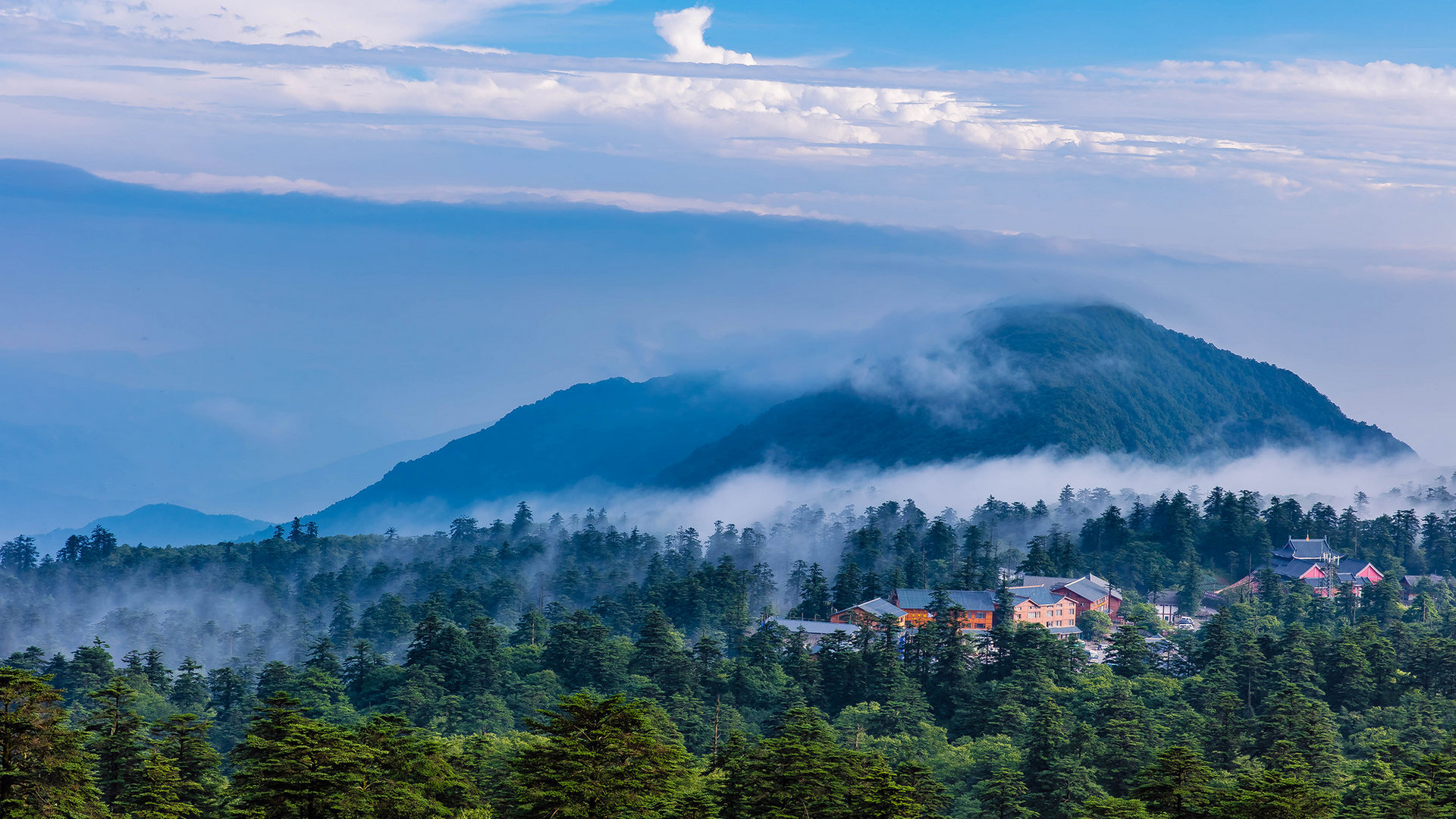
● The Four Natural Wonders on the Golden Summit
The Four Natural Wonders are the Sunrise, the Sea of Clouds, the Buddhist Halo and the Sacred Lamp. Visitors are able to view the sun rises over the summit about 200 days a year. But they have to stay overnight in a hotel on the summit. It is a three-stars level hotel with quite a high accommodation price. The Sea of Clouds is most likely to appear in summer and autumn. The Buddhist Halo only occurs about 80 days a year. The Sacred Lamp is enabled to appear with four natural conditions. It happens at mid-night after the rain has just stopped, when there is no moon in the sky, no cloud below the peak, and no breeze on the mountaintop. Compared with the halo, it is even less probable to view the Sacred Lamp.

● Highlights of Mount Emei
Golden Summit
Golden Summit is 3,077 meters(10,095 feet) above sea level. The sightseeing spots on the summit include the Copper Hall, the Silver Hall, the Golden Hall, the Copper Statue of Samantabhadra, the Hall of Avalokitesvara, the Viewing Terrace and the Cliff of Self-sacrifice. The terrace and the cliff are the ideal places on the summit for visitors to view the Four Natural Wonders. The wonders are the Sunrise, the Sea of Clouds, the Buddhist Halo, and the Sacred Lamp.
Located on the Golden Summit, Huazang Monastery is also called the Copper Hall. Its full name is the Light Everlasting Huazang Temple. It is said to be the earliest Buddhist Temple built in Mount. Emei. According to the historical records, in the Eastern Han Dynasty, Samantabhadra Bodhisattva revealed himself on the Golden Summit. It was witnessed by an aged man, Pu Gong. In order to commemorate the occasion, Pu Gong built a temple and named it as Puguang Hall or Zudian Hall. Emperor Shenzong of Ming Dynasty renamed the temple as Light Everlasting Huazang Monastery during his reign(1573-1620). In 1854, a statue of Samantabhadra was placed in the hall for worship. He was riding an elephant. The statue was copper cast and presented by Dalai Lama from Tibet. However, Huazang Temple was destroyed several time by conflagrations. Reconstruction of the present buildings began in 1986, and completed in 1990.
Wannian Temple
Wannian Temple was built in 401, founded by Huichi Master of the Eastern Jin Dynasty. It was originally named as Samantabhadra Temple or Puxian Temple in honor of Samantabhadra. The Temple was reconstructed and renamed as White-water Temple in Tang Dynasty. During the reign of Emperor Shenzong, it was destroyed by fire. The emperor had people reconstruct the monastery and renamed it as “Shengshou Wannian Monastery”. Shengshou means “imperial longevity”, and Wannian “10,000 years”. The current buildings in the monastery could be dated back to 1600. The main building in the monastery include Maitreya Hall, Avalokitesvara Hall, the Domed Hall, Mahavira Hall and others. It is the largest Temple in the whole mountain. The highlight is Domed Hall. It is called Wuliang Hall. Wuliang means ‘no beam”. The hall is made of bricks without any beam or pillar. It is considered as a feat of architectonics. A copper-cast statue of Samantabhadra is placed in the hall. Emperor Taizong of Song Dynasty(939-997) offered 150 kilograms of gold for casting the statue. It was completed in 980. Samantabhadra is riding his six-tusks white elephant. The statue is 7.38 meters in height, 62 tons in weight.
Fuhu Temple
Fuhu Temple is located nearby Baoguo Monastery. It was originally built Jin Dynasty9266-420). The present buildings could be traced back to 1651. It has three wonders, including an inscription written by Emperor Kangxi(1654-1722), a copper pagoda, and a hall of Arhats. The inscription reads Ligou Yuan. It means literally “no-dust yard’. All the buildings of the monastery are sheltered and intertwined with tall trees, but it is incredible that the withered branches and leaves fall but never remain on the roofs of the buildings all year around. Upon hearing it, Emperor Kangxi composed the inscription. The inscribed board still hangs on the entrance of Puxian Hall. The Copper Pagoda was cast in 1342, and moved to the Temple in 1982. The pagoda has 7 side and 14 stories. It is 5.8 meters(19 feet) in height. Its surface is carved with the Buddhist Huayan Scripture and 4,700 Buddhist figure images. The Hall of 500 Arhats is place at the right of the Grand Buddha Hall. There are 499 statues of Arhats in the hall. Why is it called Five Hundred Arhats’ Hall? Because there is always a monk at the entrance of the hall burning incense, 499 statues plus one monk is 500 Arhats. When Chinese people go to visit the Five Hundred Arhats’ Hall, they usually count the Arhats for fortunetelling. Walking along the rows of Arhats, a visitor starts counting in random by the number of his or her age. The image he stops at has its own number and name. He tells the monk the number or name, and takes a note back. People often do it just for play.
Baoguo Temple
Baoguo Temple is located at the foot of the mountain. It was built in 1651, founded by a Taoist priest, Mingguang Master. He felt sorry that Taoists and Buddhists struggled for gaining more followers in ancient time. The master vowed to build a monastery that would contain the figures of Confucianism, Taoism and Buddhism. By the support of local officials, the monastery was completed in one year. It was originally named as Hui Zong Hall. Hui Zong means religions assembled. Memorial tablets were placed in the hall for worship, which were devoted to Samantabhadra Bodhisattva, Taoist Guang Cheng Zi, and Confucian Lu Tong. In 1702, Kangxi Emperor of Qing Dynasty renamed the monastery as Baoguo Monastery. Baoguo means dedicating oneself to the service of his own country.
There are four main buildings placed on a east to west axis in the architectural complex. The buildings are Maitreya Hall, Mahavira Hall, Seven Buddhas Hall and Samantabhadra Hall.
According to the traditional Chinese architectural practice, Maitreya Hall is generally placed behind the entrance gate as the front building of Buddhist monasteries. It contains four huge statues. The statues are usually made of wood or earth. They are called the Four Heavenly Kings. The heavenly kings serve as protectors of lands in four directions. They stand on both sides of the hall. The image of Maitreya Buddha is in the middle of the four kings. He is also known as the Laughing Buddha among Chinese people. He has a big belly, always sitting with leg crossed. The big belly conveys that he has good patience.
Veda always stands behind Maitreya. He is holding his weapon, a pestle. Veda serves as the protector of Buddhism. He is considered as the No.1 warrior in Buddhism. It is said that Veda protected the body of Siddhartha, the founder of Buddhism, when some devils stole it away after the founder passed away. Veda is always facing the Mahavira Hall.
Mahavira means great hero or great Buddha. The hall is called Great Buddha Hall in Chinese. It is commonly the primary building in every Buddhist monasteries. The hall is commonly built to commemorate Siddhartha. Sakyamuni is a title granted to Siddhartha by his disciples. Some times, the Great Buddha Hall is enshrined with three Buddhas or seven Buddhas. In Baoguo Temple, the hall is dedicated to Sakyamuni Buddha. There are some other statues placed in the hall. The top two disciples of Siddhartha stand closely to the main Buddha. They serve as the assistants of Sakyamuni Buddha. The images of top eighteen Arhats are set near the walls on both sides.
The image of Amitabha is laid behind the Mahavira Hall. He is the chief master in the Pure Happy Land in the West. He is facing the Seven Buddhas Hall. According to the Buddhist scripture, six Buddhas mastered the world one after another before Siddhartha descended to our world. The six Buddhas and Siddhartha are called together as the Seven Generations of the Main Buddha. There are several images behind the Seven Buddhas Hall. The biggest one is Avalokitesvara Bodhisattva, called Guanyin in Chinese. He is considered as the symbolization of benevolence and rescue.
The building in the backyard is devoted to Samantabhadra Bodhisattva. It is called Samantabhadra Hall. He is riding a six-tusked white elephant. According to the traditional Chinese architectural practice, the building laid at the end of the axis is the most important. Since Emei Mountain is the holy place of Samantabhadra, the hall devoted to him is placed in last along the axis.
- HOTEST
- RECOMMEND
